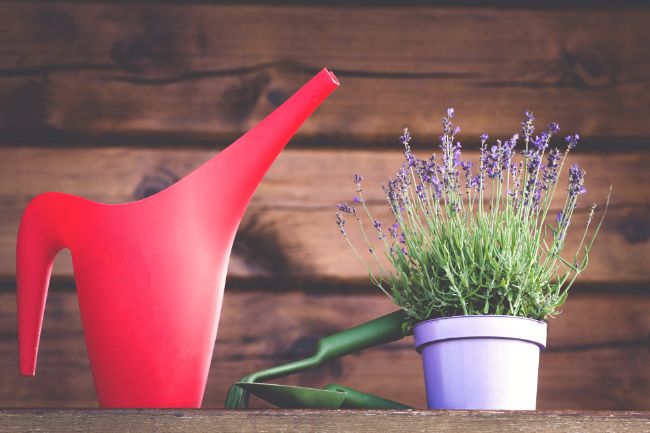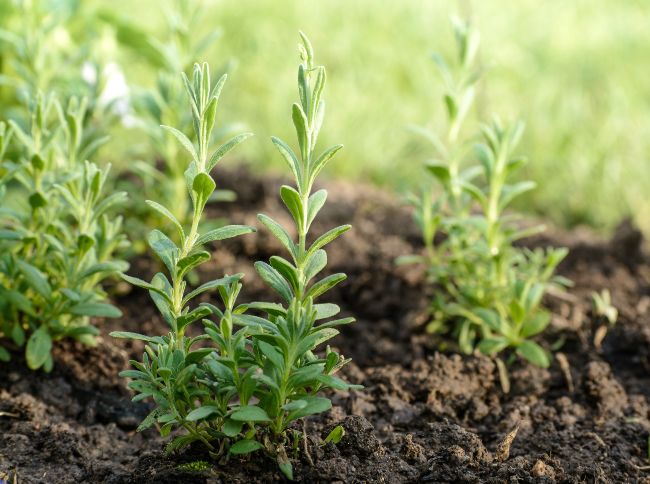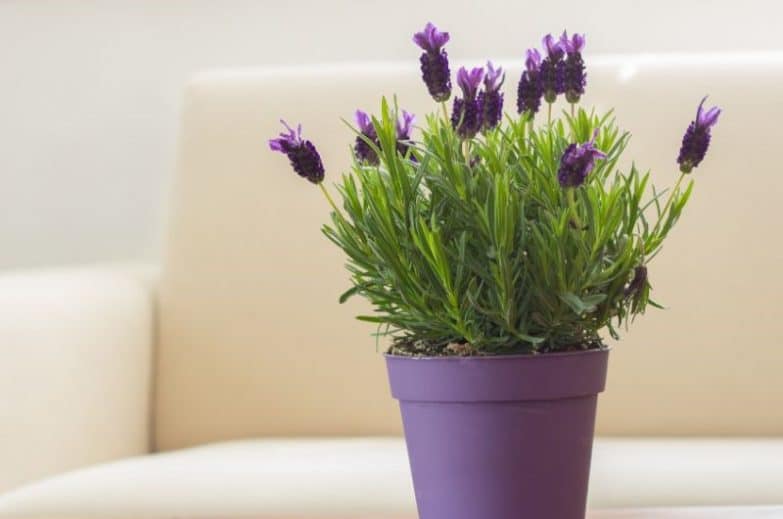Lavender plants (Lavandula) are beautiful, fragrant, widely varied in appearance, and they produce highly fragrant essential oils. Despite these wonderful qualities, sometimes they just won’t stay healthy and there are some problems that can result in a Lavender plant dying.
The most common reasons for a Lavender plant dying are improper watering, over-fertilization, acidic soil pH, diseases, pests, or inadequate sunlight. Careful inspection of the plant and growing conditions are essential to help identify and fix the issue.
Few plants are more inspiring because of their appearance, fragrance, and usefulness than the tenacious Lavender. This article will help you identify what is causing your Lavender plant to struggle and help you to get your plant back to perfect health.
Improper Watering
Both overwatering and underwatering are dangerous for Lavender plants. Those that remain in soggy soil are prone to root rot, while Lavender plants that dry out completely will droop and develop dry, yellow leaves. Either condition can result in your Lavender plant dying.
How To Identify Overwatering
Look for the following signs you are overwatering your Lavender Plant;
- Generally yellowing leaves, often affecting lower leaves first.
- Drooping despite getting plenty of water
- A rotting smell from the soil can indicate root rot.
- The soil takes a long time to dry out. This can be caused by the pot being too large for the plant, the soil or pot not draining well, or low light levels causing slow growth.
How To Identify Underwatering
The soil will feel completely dry before you water your plant and it will start to droop. If your plant is rootbound or positioned in hot, excessively bright conditions, it can dry out very quickly.
It’s easy to forget to water your plants, but thankfully, Lavender is much more capable of handling underwatering than overwatering. Set a schedule to check your plant every few days to see if it needs to be watered.
How To Fix Watering Problems
The ideal method for watering these plants is to make sure they are fully soaked. Before watering the plant again, make certain that the top inch of soil feels dry.
It is important to remember that the season and location of the plant directly influence the rate of watering that is necessary. Outdoor plants lose water much quicker than potted indoor plants. The amount of wind and humidity affect the water content of the soil as well.
Lavender plants, especially adult plants that have fully rooted, are extremely hardy. Whilst an underwatered plant can usually be resurrected, overwatering can easily result in your Lavender plant dying.
If you think you have been overwatering your Lavender plant, check for root rot by sliding the plant out of its pot. If no root rot is present, simply cut back on watering.
If there is evidence of root rot, you will need to act quickly to save your plant. Affected roots will need to be pruned off and the plant can be repotted in a new pot and appropriately fast-draining soil. Read this article for a step by step guide to identifying and treating root rot.

Soil Problems
Another issue that can threaten the health of a Lavender plant is the soil it is planted in.
Lavenders do best in loosely packed soil with a high gravel content. This allows excess water to drain from around the root structure. Tightly packed earth retains too much water and restricts root growth.
Another soil consideration is proper pH, which is a measurement of whether the soil is acidic or alkaline. Lavenders grow best with a higher soil pH of six to eight. Acidic soil, with a pH of five or less, will kill the plants (source).
To raise the pH, you can spread garden limestone and work it into the soil.
Lighting And Temperature Problems
Lavender plants thrive in bright sunlight. Ideally, these plants should receive six to eight hours of sunlight daily. New plants cannot handle the extreme heat of summer, so it is best to plant new plants in early to mid-spring if growing outside, so they can mature before the heat of summer arrives.
Many growers bring their potted Lavender plants inside during the colder months. If you do bring your lavender inside, you will have the best results if you place it near a south-facing window. Make sure to rotate the pot on a weekly basis to promote balanced, symmetrical growth.
Ornamental Lavenders planted outside grow dynamically with adequate sun. As the seasonal amount of sunlight declines, you can improve your Lavender’s growth by passively increasing sunlight. This is accomplished by pruning or using light-colored mulch or brightening the plant’s surroundings.
It is important to know that Lavenders go dormant in winter when sunlight is at its minimum. Some growers may think their plant is dead when, in fact, it is only dormant. A dead lavender has no green or white color on its stalks or branches. If dead, the branches will be brown and hollow.
Covering your Lavender plant when it is dormant is not necessary. Snow is not harmful to dormant Lavenders. The moisture provided by snow is sufficient for the dormant plant’s winter water needs.
The temperatures your Lavender experiences is another important consideration. Most Lavender plants are hardy perennials that can handle lows of 10°F (-12°C) when mature. Newly transplanted lavenders, however, have difficulty handling temperatures below 40°F (4°C) at night.
Fertilizer Problems
Lavenders require little fertilizer. Though they grow vigorously in bright sunlight, they do not need constant feeding. Overfeeding Lavender plants burns the growing branch and leaf extensions, and makes the plants more susceptible to the seasonal elements.
Choosing the proper fertilizer is dependent upon whether the plant is an indoor potted plant or an exterior ornamental. Indoor plants have little chance to gain nutrients from the soil, and thus need fertilizer.
A balanced, water-soluble fertilizer applied monthly at half the recommended strength will be more than sufficient. There is no need to fertilize your Lavender during the winter months.
Exterior lavenders do better without commercial fertilizer. High nitrogen plant food may cause heightened plant growth, but weakens the branches and diminishes the plant’s viability. Simply mix compost into the soil around the growing lavender and perhaps small amounts of potash (source).
When it comes to feeding your Lavender plants, the bottom line is “less is more.” Read my guide to fertilizing indoor plants for more information about the types of fertilizer and how to use them.

Pest Problems
Lavender plants are fairly insect-resistant. Still, there are several types of insects that do infest and harm these plants.
Spittlebugs
One of the more common Lavender infestations is the spittlebug, which is also called the frog-hopper bug. Spittlebugs begin as early as spring and create a foamy substance that covers the stems of the lavender. Typically branches of the plant may die from spittlebugs, but not the entire plant.
Spraying the entire plant with a strong stream of water often removes the foam and the insects. In some cases of abundant infestation, commercial insect killers are necessary.
Whiteflies
A second insect pest that attacks lavender plants is the whitefly. Whiteflies gather on the bottoms of the lavender’s leaves and drink sap from the plant.
Whitefly infestations distort the appearance of the plant and hamper its vitality. The greater danger caused by the whitefly is an accompanying substance they leave on the leaf that can result in mold infection.
Commercial insecticides do little to remove whiteflies. They can be removed from the plants manually with a strong stream of water. Placing aluminum foil, or other bright, reflective substances around the plants also deters whiteflies.
Aphids
Aphids also infest Lavender plants. While the aphids themselves are not particularly harmful, they carry a disease called alfalfa mosaic virus, which we will discuss in the next section. To prevent the infection, however, growers need to deter aphids.
Horticultural oil, Neem oil or Diatomaceous earth (DE) are all effective treatments for aphids. Bear in mind that using commercial pesticides to control aphids also kills other beneficial insects, including those that feed on aphids.
Disease Problems
As mentioned, alfalfa mosaic virus is a fairly common disease in Lavender plants. You will recognize its presence when you see bright yellow patches on the underside of the plant’s leaves. Often the yellow patches twist the leaves.
Although alfalfa mosaic virus usually does not kill the lavender plant outright, it does stunt the growth of the plant. As the virus is contagious, growers should remove and dispose of infected plants to prevent the disease from spreading to other Lavender plants.
The best protection against this virus is the removal of aphids not only from Lavender plants but any plants in adjacent areas.
Lavender plants also experience infections from Septoria lavandula, a fungus that causes dark splotches to grow across the leaves. Eventually, the splotches grow together to form clusters of egg-like masses (source).
Of itself, Septoria lavandula does not kill the lavender plant. The key to preventing and treating Septoria lavandula is making sure the plant is not in soggy soil.
Make sure there is adequate ventilation around the base of the plant. The fungus will appear first on the plant’s bottom leaves, so continually check those leaves for brown, gray, or purplish splotches.
Final Thoughts
A range of care problems can result in a Lavender plant dying, so it is important to check your plant regularly and react to any problems you see.
If you are struggling to keep your Lavender plant healthy, you may like to read my guide to growing Lavender indoors. This covers all aspects of Lavender care, to make sure you are providing great conditions for your plant.
Many Lavender plant problems have similar symptoms, so it is really important to inspect your plant carefully before deciding what action to take. Think about the conditions your plant has been growing in, as well as the care you have been providing.
In general, overwatering, overfertilizing, and lighting problems are the most likely causes of a Lavender plant dying. Check these first, before moving on to check for other causes.
If it is approaching winter, your Lavender may be dormant rather than dead. Wait until spring to see if your Lavender plant recovers and starts growing again.
It’s not always possible to fix a dying Lavender plant, but gardening is a continual journey of learning, so and we often learn far more from our failures than our successes.

